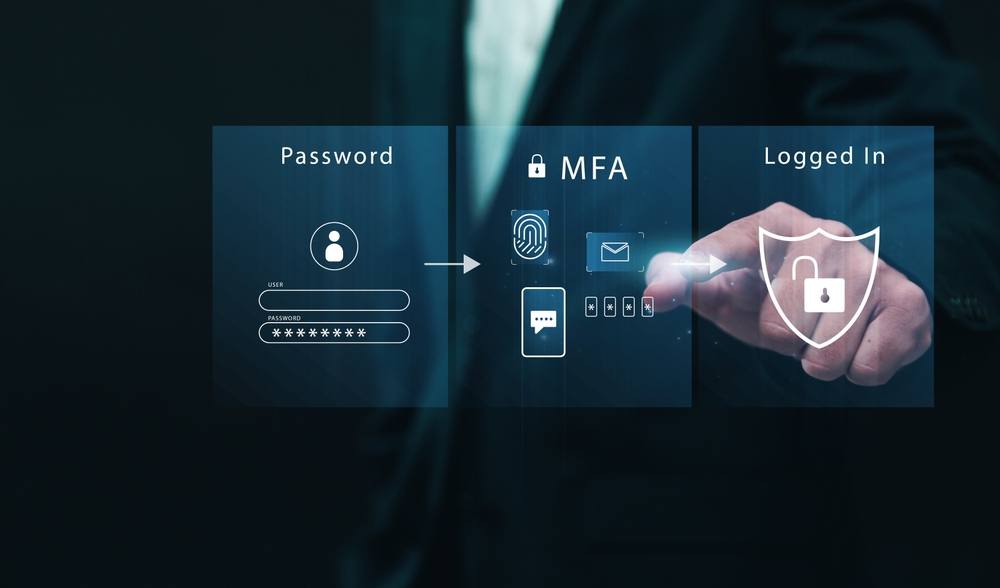IT Support Trends To Watch in 2024

Historically…well the last 25 years or so…IT support services have moved through the gears to ensure businesses were provided with effective solutions to inevitable IT problems. In 2024, IT support trends are expected to shift into another gear.
It goes without saying that IT support services in London play a pivotal role in maintaining the continuity of business operations. There is an argument that managed IT support services are becoming increasingly important. As the business landscape evolves, the IT issues businesses face ramp up as well.
Traditionally, managed IT support services were the toast of the town because they offered rapid resolutions to an increasing number of IT issues. In the early years, services related to hardware, software, or network infrastructure. IT support teams were effective in helping to minimise downtime and ensure that critical business functions remain operational.
Over the last decade, the trend towards remote and hybrid work environments brought fresh problems which required innovative solutions. IT support services pivoted to deliver essential strategies that addressed unique challenges associated with supporting remote workforces, including connectivity issues, collaboration tools, and security concerns.
In the same time period, the threat of cybercriminals has continued to evolve. IT support services have been instrumental in implementing and maintaining robust security measures that prevent data breaches and protect data.
With the introduction of data protection laws in the UK (GDPRUK) together with the increased awareness of data protection rights among the general public, firms have relied on remote IT support teams to design, implement and manage the security needs.
Outsourced IT teams continue to provide perfect standard services. But in 2024, and for the foreseeable future, we expect new IT support trends to emerge that will take managed IT support to another level.
IT Trends Will Focus on User Experience

This year will see a heightened emphasis on improving the user experience for IT support. This not only includes faster response times, user-friendly interfaces, and personalised support experiences but also the working relationships between in-house teams and your remote IT support team.
The increased reliance on remote support teams has called for some adaptions. It’s quite natural for seasoned IT professionals who have worked onsite with on-site servers will meet challenges working with hybrid environments.
Not only that, but it’s also natural for some friction to emerge towards supporting distributed and remote workforces. New technologies give rise to “little upstarts.”
When you work with managed IT teams that understand this, it is easier to establish a foundation we can all work with and build on. The crux of the matter is that managed IT support teams are there to support. The role is in the title.
We leave you to crack on with the important tasks such as business strategy and provide support where you need us to — which is typically the mundane tasks that ordinarily cause distractions or cloud technologies where in-house knowledge is lacking.
Self-service portals and knowledge bases designed to empower end-users will also be improved. To avoid waiting in queues and to develop your knowledge base, self-service portals are great for resolving common issues independently and learning about new technologies.
Remote AI-Powered IT Support Vs Augmented Reality (AR) for Remote Assistance
Artificial intelligence (AI) will undoubtedly be an IT trend in 2024 — and in various ways. Having said that, we’re not convinced that every solution is efficient.
AI is great for automated ticketing and predictive issue resolution. Chatbot-driven support interactions are okay for common problems but can be frustrating for complex issues. However, virtual assistants are expected to rise in prominence in 2024.
The alternative, which is an IT trend we envision will have lasting legs for complex queries is the adoption of augmented reality (AR) tools for providing remote assistance. AR can assist in troubleshooting and resolving issues by overlaying information on the physical environment.
Let’s take a look at the pros and cons of each.
Remote AI-Powered IT Support — Pros and Cons
AI-powered IT support can automate routine tasks, such as ticket resolution, system monitoring, and basic troubleshooting. This enhances efficiency and frees up human resources for more complex issues.
AI algorithms can also be used to analyse historical data and patterns to predict and proactively address potential issues before they escalate. This helps in minimising downtime and improving overall system reliability.
Moreover, a large volume of requests can be handled simultaneously, providing scalability that is beneficial for businesses with diverse and distributed IT environments. Data-driven insights enable businesses to make informed decisions, optimise processes, and identify areas for improvement.
How chatbots lack a human touch and can feel like a waste of time trying to find solutions that fall outside common issues and routine tasks. Some users, understandably, prefer human interaction, especially in situations that require specialist knowledge.
The effectiveness of AI relies on the quality and relevance of the data it receives. Inaccurate or biased data can lead to incorrect conclusions and recommendations. Chatbots are still frustrating and it could be several years before we see significant improvements.
Augmented Reality (AR) for Remote Assistance — Pros and Cons
AR provides real-time visual support, allowing remote support agents to see exactly what the end user is experiencing. This can be invaluable for troubleshooting and resolving issues quickly.

This method of delivering IT support also fosters collaboration between your in-house team and your remote support team. This is particularly beneficial for providing on-site guidance through visual overlays, arrows, or annotations. This assists users in following step-by-step instructions for tasks like repairs, installations, or configurations.
There are downsides, but, in our opinion they are minor. AR solutions are best implemented in complex issues, so the number of times it’s called into action is limited.
We’ve also seen reports that the learning curve for working with AR is negative, but one of the reasons for this solution is to assist in-house teams with building their skills with technologies they are not accustomed to already.
Whether you prefer chatbots or augmented reality is essentially the preference of the end user in relation to a specific problem. You will need to consider the implementation to determine if either or both options offer value for money.
AIOps Could Be A Leading IT Support Trend in 2024
Artificial intelligence could also play a key role in network management. Tasks include automation of software updates, patch management, and system monitoring. Increased automation of routine and repetitive tasks within IT support allows remote teams to focus on more complex issues.
AIOps uses machine learning algorithms to analyse large volumes of data generated by IT systems. By identifying patterns and anomalies, AIOps platforms can automatically detect and resolve common issues and detect potential issues before they impact performance.
This reduces the need for manual intervention and leads to faster problem resolution and minimised downtime. IT teams can address problems preemptively and avoid service disruptions.
In addition, AIOps platforms excel at performing root cause analysis by correlating data from different sources and identifying the underlying causes of IT incidents. This capability helps IT teams address the root issues, preventing recurring problems and improving overall system stability.
AIOps facilitates real-time monitoring of IT systems, applications, and services and helps optimise resource allocation by analysing usage patterns and making recommendations that increase efficiency.
The holistic view of an IT environment enhances network performance and the health of your systems, applications, and infrastructure. AIOps This enables quick detection of performance issues, bottlenecks, or anomalies, allowing IT teams to respond promptly and maintain optimal system performance.
Through automation, efficient resource utilisation, and proactive problem resolution, AIOps can contribute to cost savings. Businesses can optimise IT operations, reduce manual labour, and minimise the financial impact of system downtime.
In dynamic IT environments, such as those using cloud services or microservices architectures, AIOps adapt well to changes and provide continuous monitoring and analysis, ensuring that IT operations remain effective and resilient.
Migration to Private Cloud Solutions
The mass migration to the public cloud during the Covid lockdown debacle is coming back to bite the tech giants. A large number of IT professionals resent being tied down to closed-source solutions offered by public cloud platforms like Microsoft, Google, Amazon, IBM and Nvidia.

Whilst public cloud services are a cost-effective solution for starting your cloud journey, there are limitations to innovation. As concerns about vendor lock-in limiting flexibility reach a tipping point, firms are looking for alternative solutions and private open-source cloud platforms are a better long-term option than simply switching providers.
The perception of relinquishing control over infrastructure and data to a third-party cloud provider can be a concern for some IT professionals who are used to managing on-premises environments. The issue is even more frustrating for IT teams that require highly tailored on-premise solutions.
Concerns about the security of sensitive data in a shared, multi-tenant environment is also common. Addressing data security, corporate espionage, compliance and regulatory requirements can be challenging in certain industries.
Organisations operating in certain regions may face challenges related to data residency requirements. Compliance with data sovereignty laws and regulations can be more complex in the context of public cloud services.
An IT support trend we anticipate to see among larger businesses this year is a U-turn to private cloud solutions. Migration to private cloud solutions provides businesses with a dedicated, secure, and customisable cloud infrastructure.
Private cloud solutions offer dedicated infrastructure, ensuring that resources are not shared with other organisations. This isolation enhances security by reducing the risk of unauthorised access or data breaches.
Corporate entities need to have greater control over security policies, encryption methods, and access controls and a private cloud environment enables you to do that.
If the security solutions offered by the public platform are inadequate or untrustworthy, open-source solutions give you the option to implement tailored disaster recovery plans to protect against data loss and system downtime, providing a higher level of control over data protection, cybercrime prevention and data recovery processes.
Private clouds allow organisations to have greater control over the location of their data and network management tools, allowing businesses to implement monitoring, automation, and orchestration solutions that align with their specific requirements.
But the real benefit is the capacity for customisation and tailored performance. Private clouds allow businesses to develop hardware, software, and network configurations to meet specific performance requirements. This flexibility ensures that the cloud environment aligns closely with the unique needs of your business.
With dedicated resources, businesses can achieve more predictable and consistent performance levels, ensuring that critical applications and workloads operate optimally.
Private cloud solutions also facilitate scalability on demand, offering granular control over resource allocation. This allows for efficient scalability without compromising security or performance. Furthermore, open-source solutions can dynamically allocate resources according to workload requirements without the risk of interference from other parties.
This also means you can enjoy low-latency networking which is beneficial for applications that require fast data access and communication between components. If you rely on legacy applications, open-source solutions enable you to configure dependencies.
IT Support in London
Having access to a managed IT support team enables you to take advantage of experienced IT support professionals to handle routine tasks and tap into the knowledge of specialists who can fill in the skills gap.
The talented teams at Micro Pro enable your in-house crew to focus on the more important aspects of their role. With a proven track record in supporting a wide range of businesses across multiple industries, Micro Pro is your IT support team in London that can help you ascend to the next level by adopting IT support trends.


